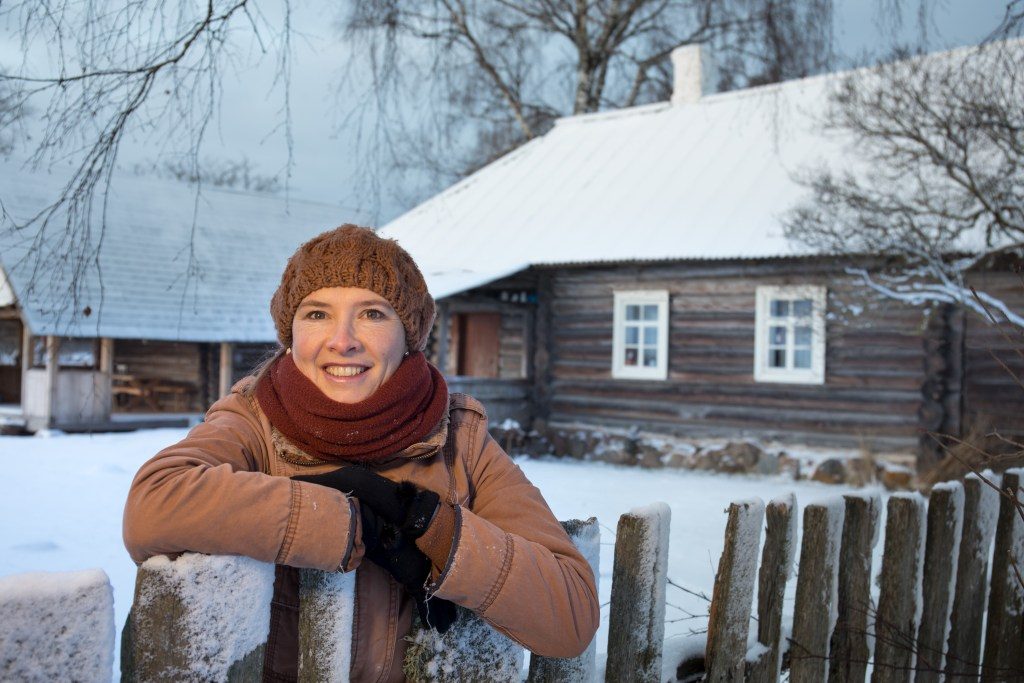Helen Külvik, who lives in the small village of Obinitsa in Setomaa – a home of Estonia’s ethnic Seto minority – gives an overview of the local life, culture and customs.
This is an edited version of the article originally published in Hear It From Locals magazine.
Helen Külvik, a Seto, lives in the small village of Obinitsa in Setomaa. She has studied geography at the University of Tartu and has a PhD in landscape ecology and environmental protection. Although Külvik has worked as an editor for most of her life, she finds being a tour guide as her real passion. She has now become more and more active towards her roots and works as a tour guide in Setomaa. Her interests include tourism, geography, cooking, traditional cultures and hiking, and she believes there are a lot of opportunities to explore all of that in Setomaa.
The odds are you have never heard of Seto people of Estonia, an ethnic minority who are fighting hard to preserve their ancient customs and beliefs. Setomaa, or the land of the Setos, is nestled between the southeast of Estonia and the northwest Pskov Oblast of the Russian Federation. The area is situated 186 miles (300 kilometres) southwest from Tallinn, the Estonian capital.
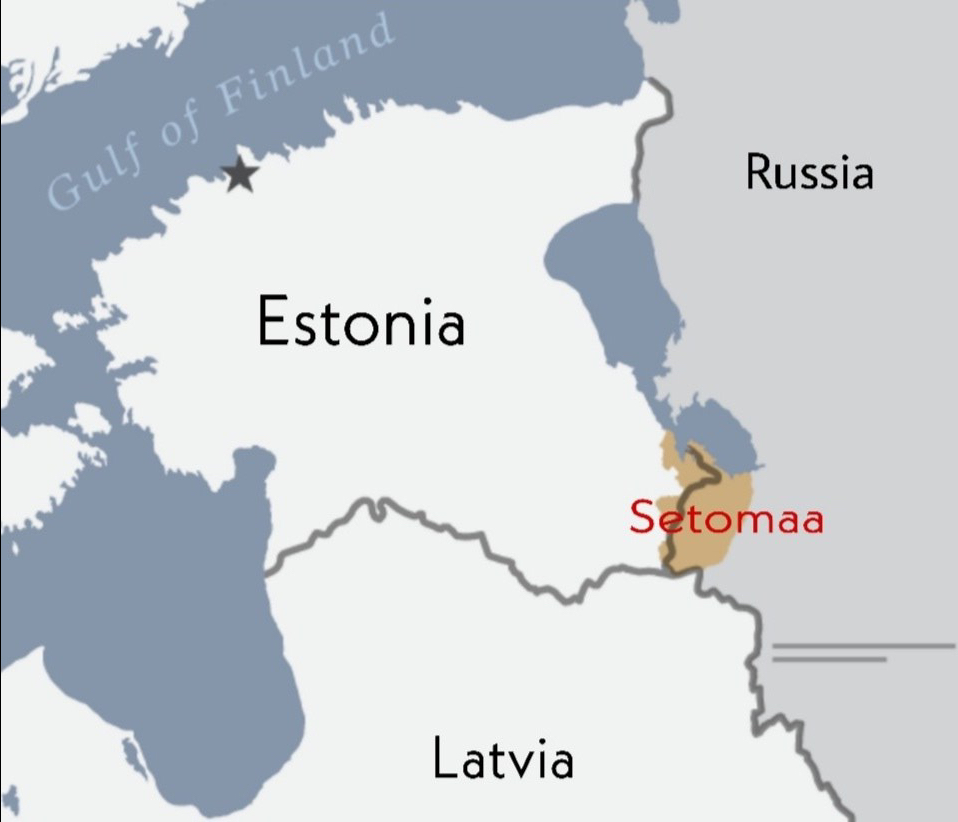
Setos are divided between Estonia and Russia by the visa regime, dividing numerous relatives. Geographically, 3/4 of the historical Setomaa now belongs to the Russian Federation, and only 1/4 is part of Estonia. In the 20th century, the Seto border shifted numerous times until the dissolution of the Soviet Union in 1991. Accepting their fate, the Setos declared themselves as a new entity, the “Kingdom of Setomaa” – it’s a ceremonial name, not a legally recognised country – in 1994.

The historical capital of Setomaa was traditionally Pechory (Petseri), which now belongs to Russia; today, the Seto settlement has come to revolve around the Estonian town of Värska. Most Setos now live in Estonia and are therefore very much influenced by Estonian culture.
Helen, how would you define the Setos?
First and foremost, the Setos are a small Fenno-Ugric nation with a unique traditional culture. They are very close relatives of Estonians and, today, we can say they are a sub-ethnos of Estonians.
Most Setos have a double identity: they are Setos, but they are also Estonians. Setos have their own language/dialect, and, unlike Estonians, they are Eastern Orthodox Christians. Setos are also defined by being used to living on the edge: on the border of Estonian and Russia, between the Orthodoxy and the Lutherans, between the East and the West.
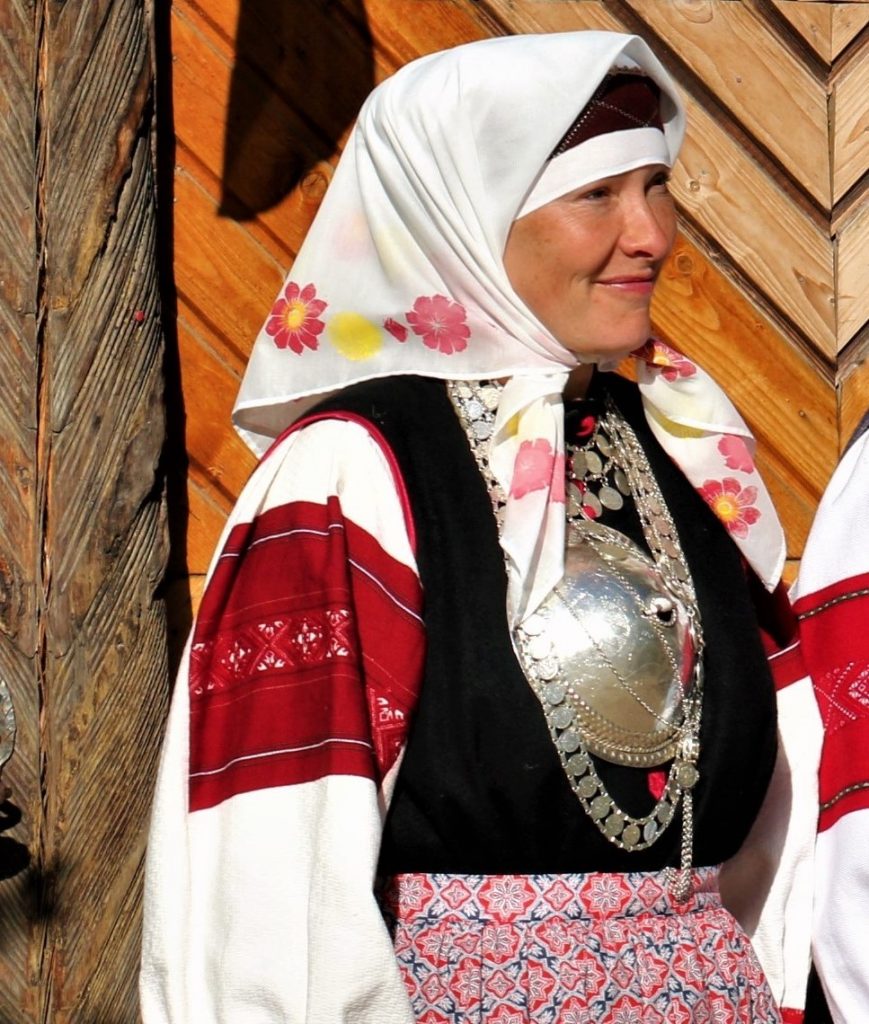
When is the best time to visit Setomaa, so that one can experience their local festivals and culture at its best?
The local festivals of all sort are most abundant during the warm season: starting from the Easter till the beginning of September. During that period, the Setos have several cultural events, like the Seto Kingdom Day, Seto Folk, etc, but also most of the church feast days are celebrated during the warmer half of the year.
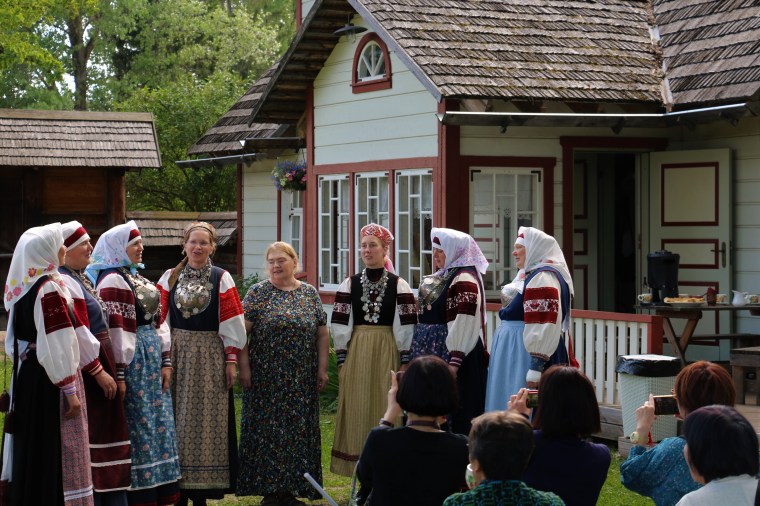
However, I recommend visiting Setomaa also out of the season. In the peak season – from mid-June till mid-August – there can be crowds, but off-season you can receive amazing hospitality; people have more time for you! So, my best experiences with guests come from April-May and September-October.
Also, the winter can be fantastic! There is snow and everything is so quiet… And then you step inside an old farmhouse where the fire is burning in a big stove, and the hostess has cooked something, and it all smells delicious and it feels like in a fairy-tale. Actually, the winter is the time for telling fairy-tales and doing handicraft for the Setos.
What are the top three must-visit places in Setomaa?
I would certainly take my guests to the Värska Farm Museum. It’s a lovely open-air museum with actual livestock to give the idea of the Seto way of life on a farm about a 100 years ago. In the museum, you can learn a lot about the Setos and start to understand how and why they are different from Estonians, but also from the people in the Western world in general. The Värska village lies ninety kilometres southeast of Tartu.
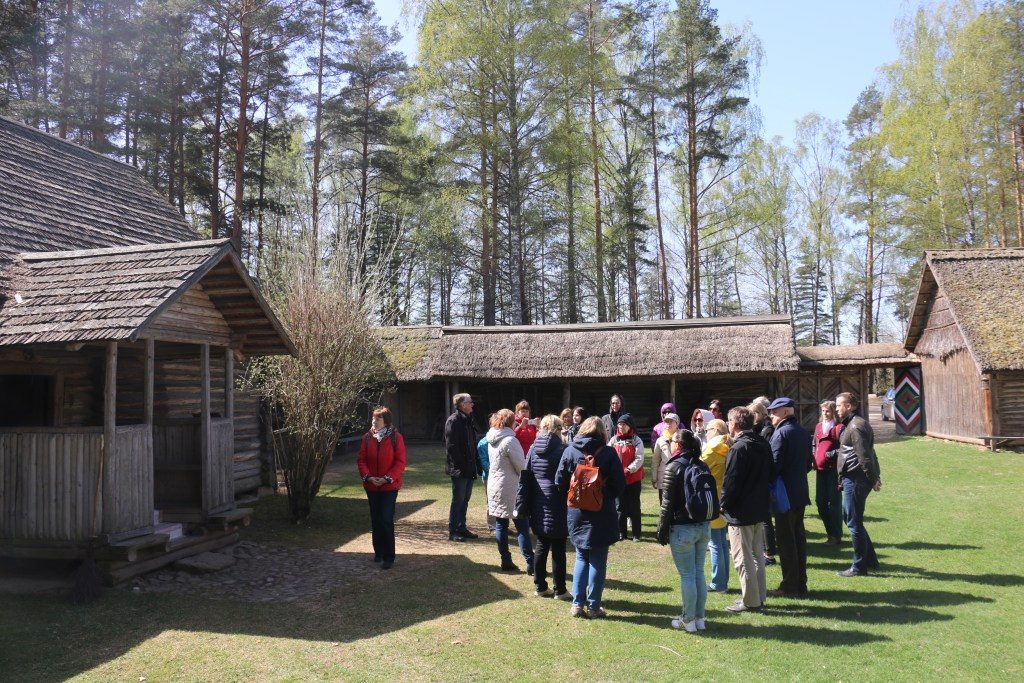
Then, a must-see-and-do is the “dress up as a Seto” workshop at the Obinitsa museum, led by Õie Sarv, one of the cultural cornerstone persons of Setos. One member of the group is dressed up in real Seto clothes. It is always an amazing transformation and through that workshop you learn about the culture and the people. And it’s fun to observe!

The third place I’d take you is a small chapel (tsässon in the Seto language) or a church. The Setos are Orthodox, it is deeply rooted in the culture, but Seto Orthodoxy is an interesting mix of Orthodoxy and pre-Christian traditions. My favourite chapel is the Serga chapel near Meremäe – there you can meet Eevi, a local lady who takes care of the chapel and can tell stories about living on the edge (the border).
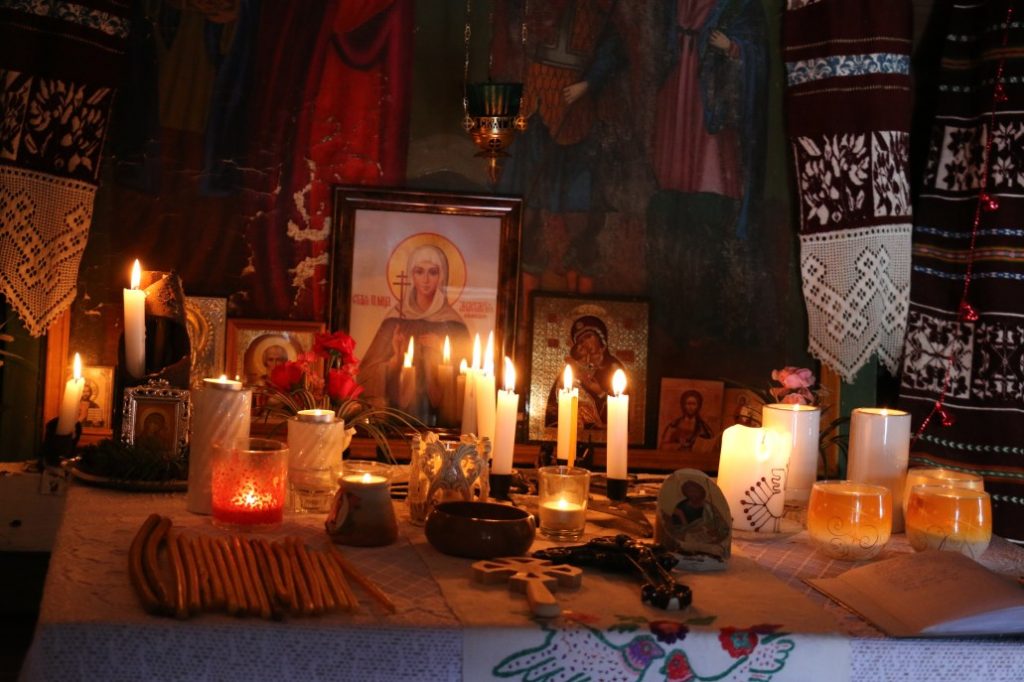
There is one more place I want to point out – the Saatse “Boot”. It is not so much a sight, but a drive-thru. The Saatse “Boot” is section of road on the Värska-Saatse road where you enter the territory of Russian Federation for 800 meters. There are no tickets for this sight, and you cannot stop on the road. There are no border guards systematically checking your passport; however, you have to be aware that you are in the border area and can be stopped for passport control at any time.
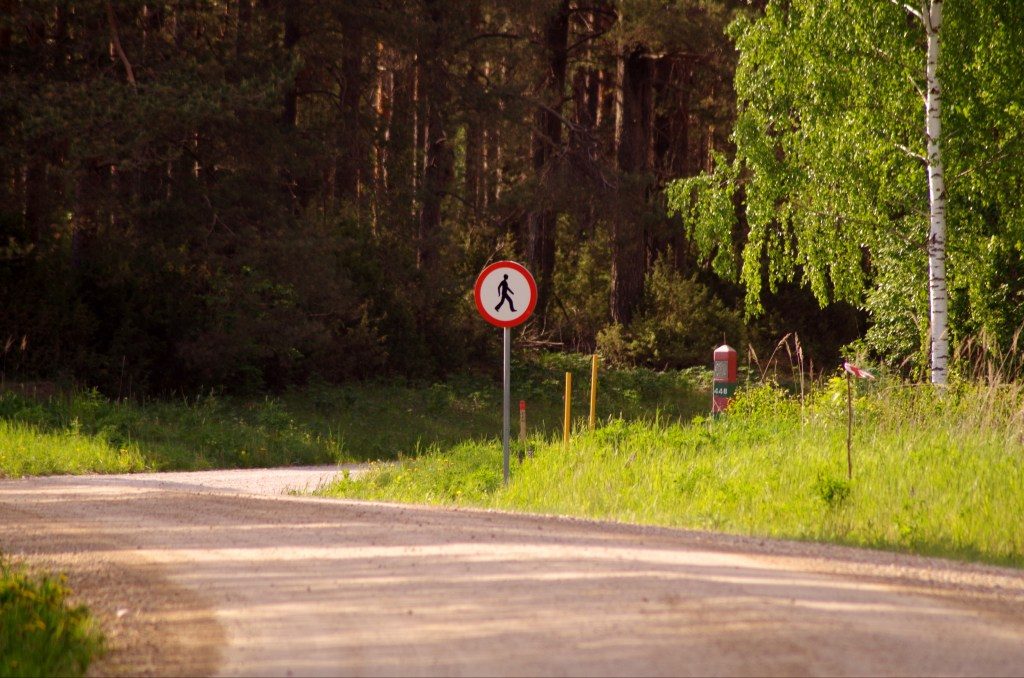
The Saatse “Boot” is called a boot because the piece of Russian territory extending to Estonia has a boot-like shape. Keep in mind that you are not allowed to go closer than 15 meters from the border posts.
What is the most celebrated event and festival of the Setos?
The most important festival is certainly the Seto Kingdom Day. Even though the Setos are a very traditional people and most of the holidays have a long historical background and tradition, the Seto Kingdom Day is a rather new tradition: in 2020, it will the 27th time to celebrate the Kingdom Day. It is always held on the first Saturday of August, but the place varies, so you’d have to ask about that. In 2020, it will be celebrated in the small village of Kolossova.

The Kingdom Day was initiated from the need to bring all Setos together after Estonia had regained its independence and the land of the Setos had been cut into two. The idea started to develop, and the festival has now grown into the biggest and most important festival of the Setos. The day is full of dancing, singing, handicraft, Seto food. Most Setos attend the festival in Seto national costumes, so that day is the best chance to see the abundance of beautiful Seto clothes, both on men and women.
The most important event during the Seto Kingdom Day is the election of the new Chief Herald (ülembsootska in the Seto language). The Chief Herald is here to carry out the tasks of King Peko, who is sleeping in the Pechory Monastery and can’t, therefore, rein the Setos himself. So, we need the Chief Herald to take care of the people and be their mental leader. The Chief Herald is the most important and honoured person of Setomaa during the respective year.
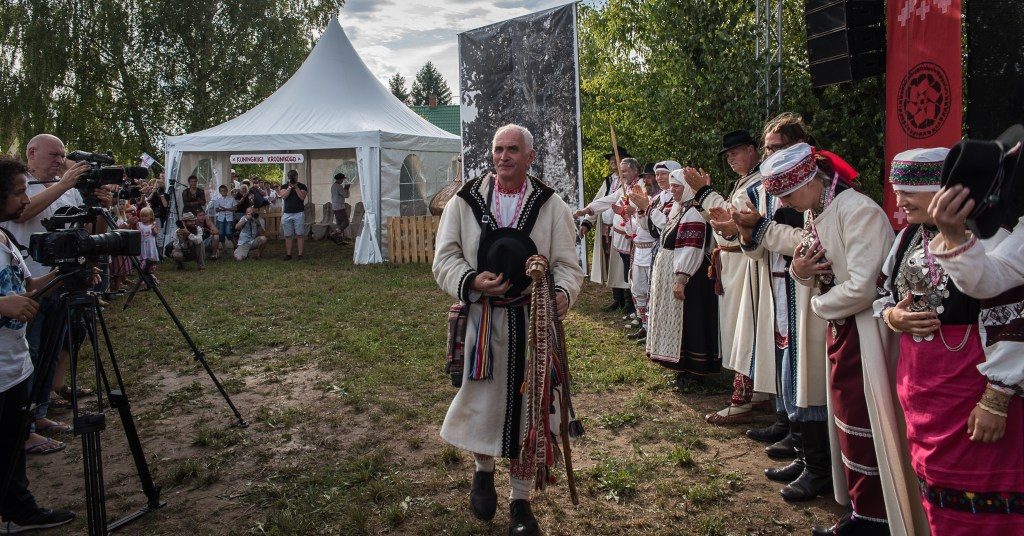
The day reaches its end with a fun “military parade”, where the troops consisting of people carrying spades and pitchforks or funny costumes declare the oath of allegiance to the newly elected Chief Herald.
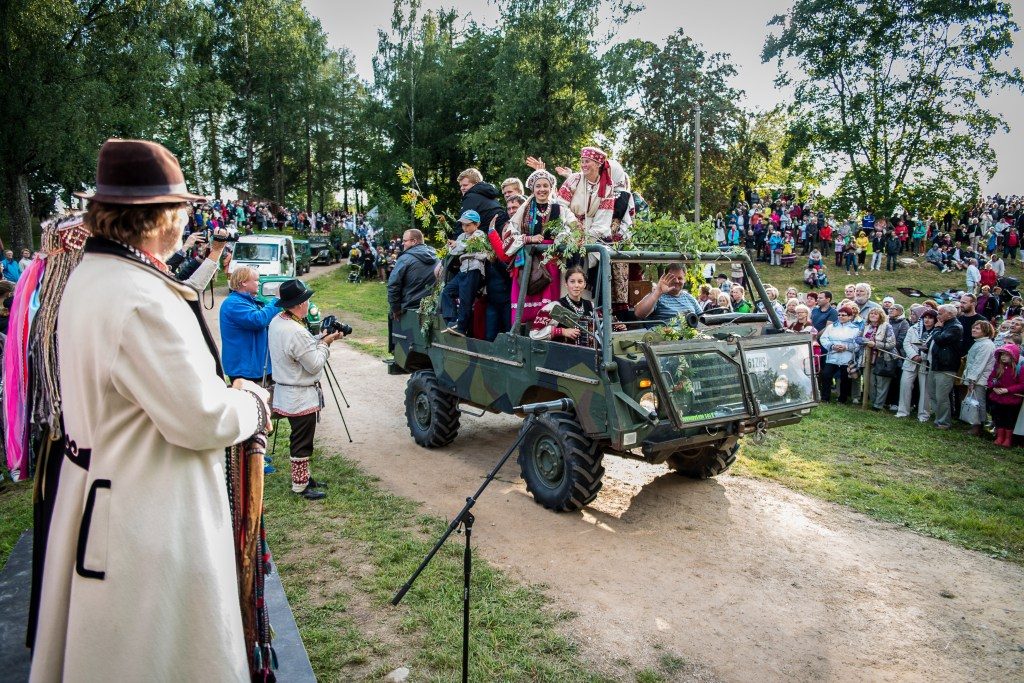
What are the local crafts or souvenirs of Setoland? Where can one see them being made?
The local souvenirs are, first and foremost, related to handicraft. There is quite a good choice of handicraft on sale in our three museums: at Värska, Obinitsa and Saatse, and at the craft shop of the Seto Atelier. I’d advice to visit the Seto Atelier at Obinitsa, where you can meet a Seto silversmith – Evar Riitsaar – and learn about the Seto silver. Silver jewellery is what the Seto women’s national costume is best known for.
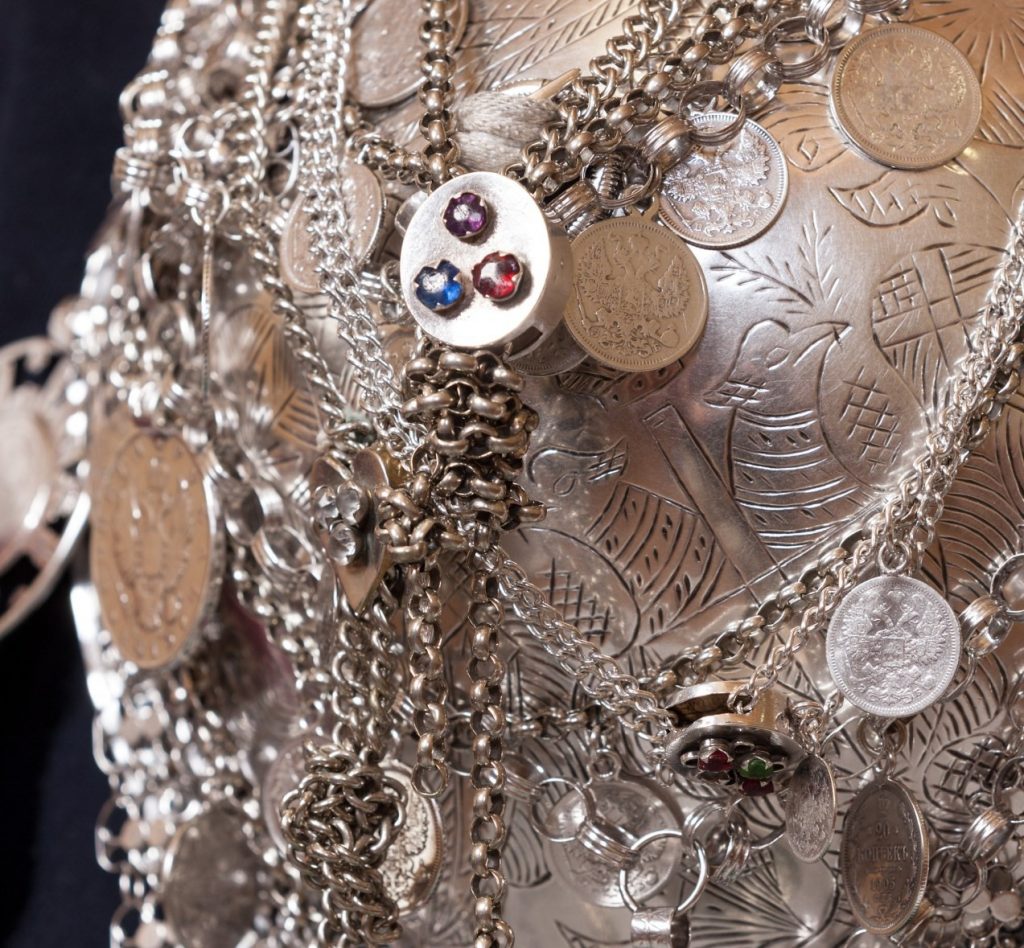
At the atelier, you can also make your own souvenir by attending a workshop of block-printing. You can print on your own T-shirt or jeans (very fancy on jeans, by the way!) or on a textile shopping bag you get from the owners. People love the workshop because it’s all about creativity and designing something that is uniquely yours – and, a memory that lasts. Moreover, you can participate in several other handicraft workshops that are offered upon request at several locations at Setomaa.
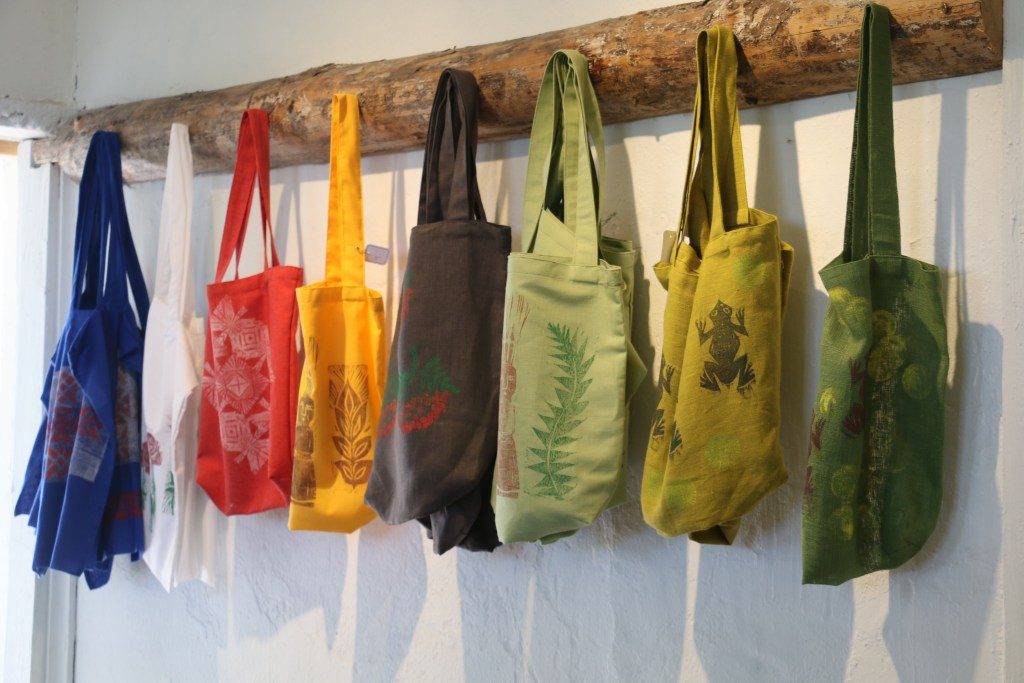
Another really good souvenir that most people can’t resist buying are handicraft soaps from the Old George’s soap shop at Kolossova. The soap master – a man named Silver, by the way – is a funny storyteller and he puts a lot of love as well as different ingredients from the local nature into his soaps – and you can really feel it.
But, as food souvenirs are also becoming increasingly important in travel all around the world, then that’s also something you can get from Setomaa. In recent years, organic black currant cultivating has boomed in the area and different black current products, like jams, syrups, etc, are already available.
Tourists visit Setomaa as a day trip, how many days would you say are enough to experience the Seto culture?
A day trip is good to get the glimpse and a general idea about the Seto culture. However, if you want to participate in workshops and maybe have a like-a-local experience, then two-three days would be good. There is plenty to do and see.
In the summertime, if you happen to be here for one of the numerous events (festivals, church feast days, etc), then this takes up a whole day. The food and handicraft classes can last one-to-three hours and if you want to try something really special – the smoke sauna (black sauna) ‒ then be sure to extend your visit by half a day. Going to the smoke sauna is a very memorable experience for guests and you do not have to worry about going in the smoke – the smoke is long gone before people go in the sauna.
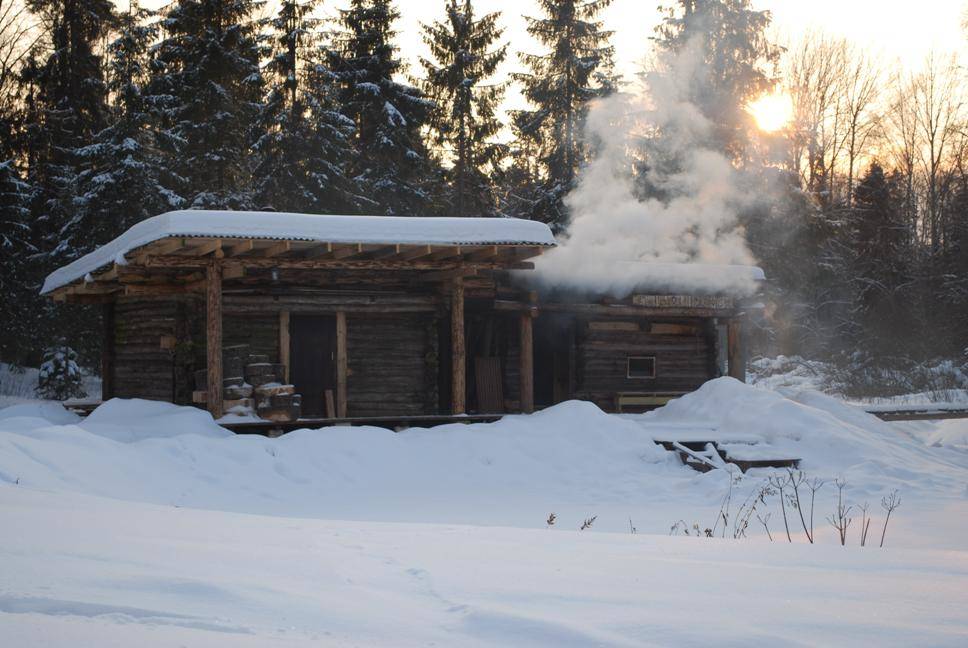
How easy it is to communicate with the Setos if one isn’t fluent in the local language?
When taking a trip at Setomaa, you have to bear in mind that most of the local people are not fluent in English. Therefore, I really recommend getting a local guide who can be of help when communicating with the local people, because Setomaa is first and foremost about its people. The local guide knows also about opening times and contacts, and about hidden places.
The Seto people are very hospitable, but it helps even more if you are travelling around with someone they know. I am one of the local guides at Setomaa and I have been guiding for over 20 years – not a main job, but more like a hobby. I love the excitement of sending out a proposed programme based on the special interests of my guests.
It is a very living experience and it’s hard to describe how fulfilling, enlightening and meaningful is this experience for the guests. They are meeting real people in the real world, the carriers of a very special culture in their everyday environment. The human contact that is created between people of different countries is amazing and heart-warming.
The Setos have a song for every occasion, what is the connection between the Setos and the tradition of the “leelo”?
The Seto leelo is something really truly unique. It is a 2,000-year old singing tradition that still lives on. The Setos have always been a singing culture. I think it’s partly due to the fact that the Seto language has been an oral language and the Setos were mostly illiterate until a 100 years ago. Singing has been the way to express joy, but also envy, sadness and grief. Singing has been the means of all kind of communication and has helped make working on the fields or in the house more tolerable, easier to bear.

The Setos really have a song for every occasion, especially as improvisation is a crucial skill of Seto leelo. Songs are made on the spot, on each occasion, and still there are singers who can do that. I would say that listening to some leelo should be a “must” on your trip to Setomaa. There are several leelo choirs who can gather and sing to groups (upon request). However, you can enjoy the leelo during the village parties (called kirmas(k)) that follow our numerous church feast days – if you happen to be around at that time.
What is the most loved local food of Setos? Is there any specific way of preparing or serving it?
The signature food of Setomaa is sõir. The Setos have a great saying: once you have sõir, you’ll also have friends.
Put simply, sõir is a fresh pressed curd cheese. Its main ingredients are milk and light curds. Sõir is made by scalding the milk until the whey separates. Then solids are strained and added to some melted butter along with beaten eggs, salt and caraway seeds, if desired. The mixture is stirred and the poured in a mould to cool.
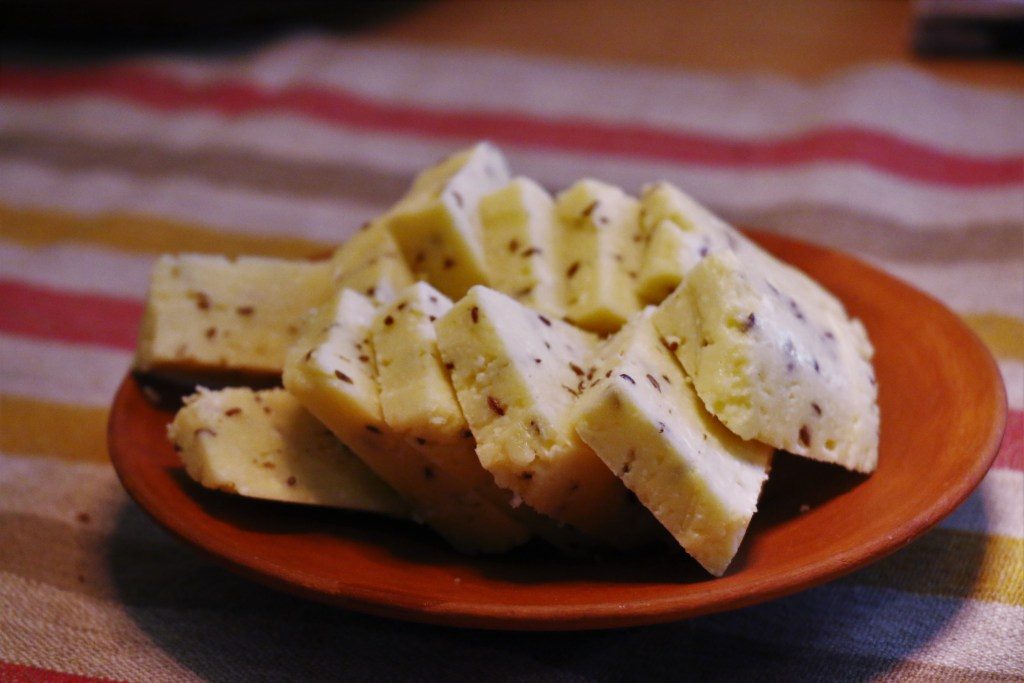
Sõir is a standalone dish: an appetizer, a last course, much like one might see fine blue cheeses served after a meal, or just as an hors d’oeuvre on a smorgasbord. Butter, honey or garlic sauce can be spread on sõir. Sõir is not something you eat every day. It is a party food and a must-be on any Seto festive table.
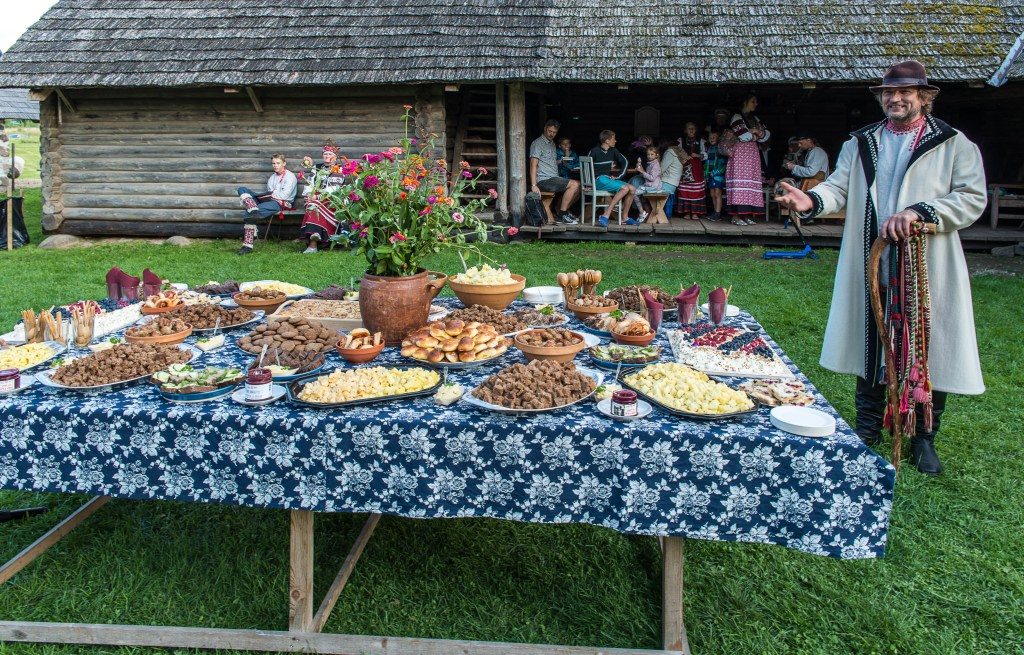
Which are the best places to try the local Seto cuisine?
We have several places to taste sõir and other delicacies of the Seto cuisine in Setomaa.
I often go to Taarka Tarõ, located at Obinitsa, for a real Seto meal. Rieka and Aare Hõrn, the hosts of the restaurant, have created a cosy, home-like environment in a former farmhouse and hold on to the traditions of the Seto cuisine in their menu. Here you can taste several interesting foods, like smelt soup with smoked pork (much more delicious than it sounds or looks), or some oven-baked porridge (rice, buckwheat etc) and of course, sõir.
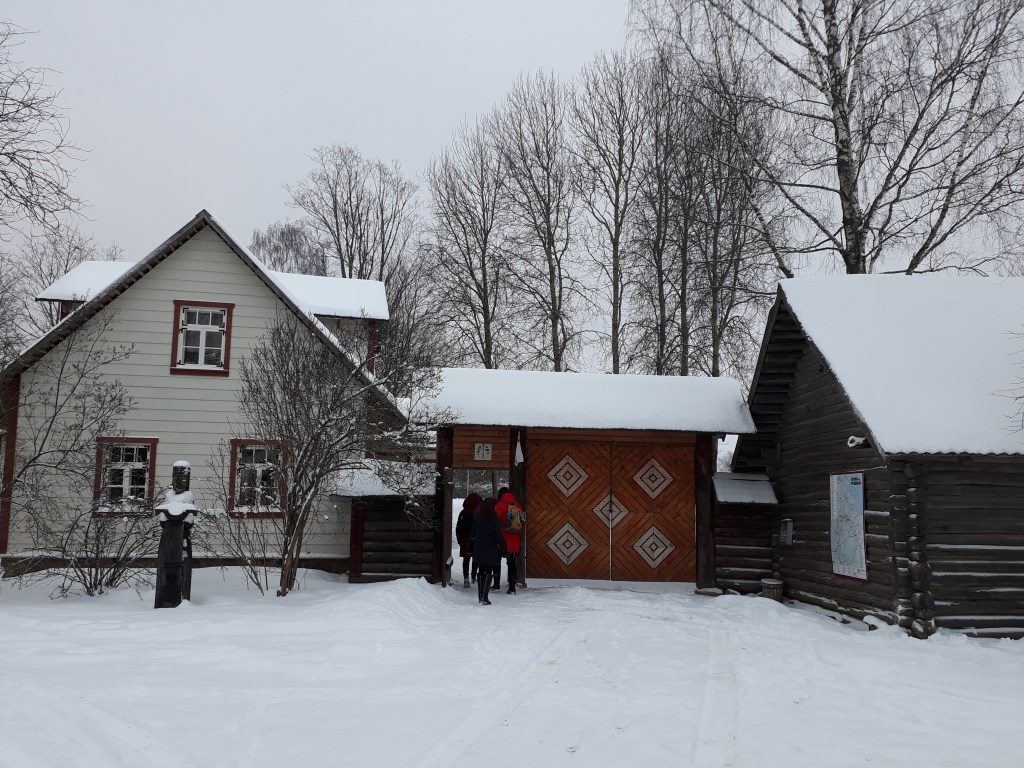
Another very nice place is the home restaurant Maagõkõnõ at Saabolda village – the chef, Sirje Kruusamäe, is famous for her onion and mushrooms pies, choice of fish meals and sõir that is consumed warm – super delicious! She also has an interesting selection of home-made wines. Have you ever tasted chanterelle wine? Or spruce shoot wine with dandelion? I’d also recommend Vanavalgõ at Mikitamäe. There the hostess, Inara Luigas, makes delicious pelmeni – dumplings filled with meat. She is also a master of making sõir.
For a simpler, yet tasty Seto food there is Tsäimaja (“Tea House”) next to the Värska Farm Museum. At all places it is possible to have different food workshops upon request. For instance, you can try making sõir – it is not a long nor very complicated process!
The custom of having a commemorative meal on the family graves is quite different from the rest of the world. What is the reason behind this and how elaborate are the meals?
Yes, it’s quite an interesting phenomenon. It is actually a very old Fenno-Ugric custom that has been swept away from most other Fenno-Ugric areas. The Setos, however, have maintained this pre-Christian tradition.
The basic idea is to share a meal with your family. I would compare it with the well-known large Italian or French family dinners. The only difference is that some of the family members are at the graveyard, so you have to go to them to share the common meal. The Setos are not afraid or in denial of the asleep ancestors; instead, the ancestors are very much considered as part of the existing family. Family ties are extremely important here.
People gather for commemorative meals on the respective church holiday. For instance, the feast day of the Obinitsa church is Transfiguration Day (held on 19 August, on the “old calendar” that Setos still follow). So, on 19 August, everyone who has even distant relatives buried at the Obinitsa cemetery tries to come to Obinitsa.
First, a service is held in the church, followed by a procession around the church. After that, people take their baskets of food and drinks and go the graves of ancestors. Sometimes the table is set on a small bench, but, more typically, the food is just put on the grave covered with a nice tablecloth. People eat and drink, walk around and greet each other with food and drinks. It’s really quite a spectacular thing.
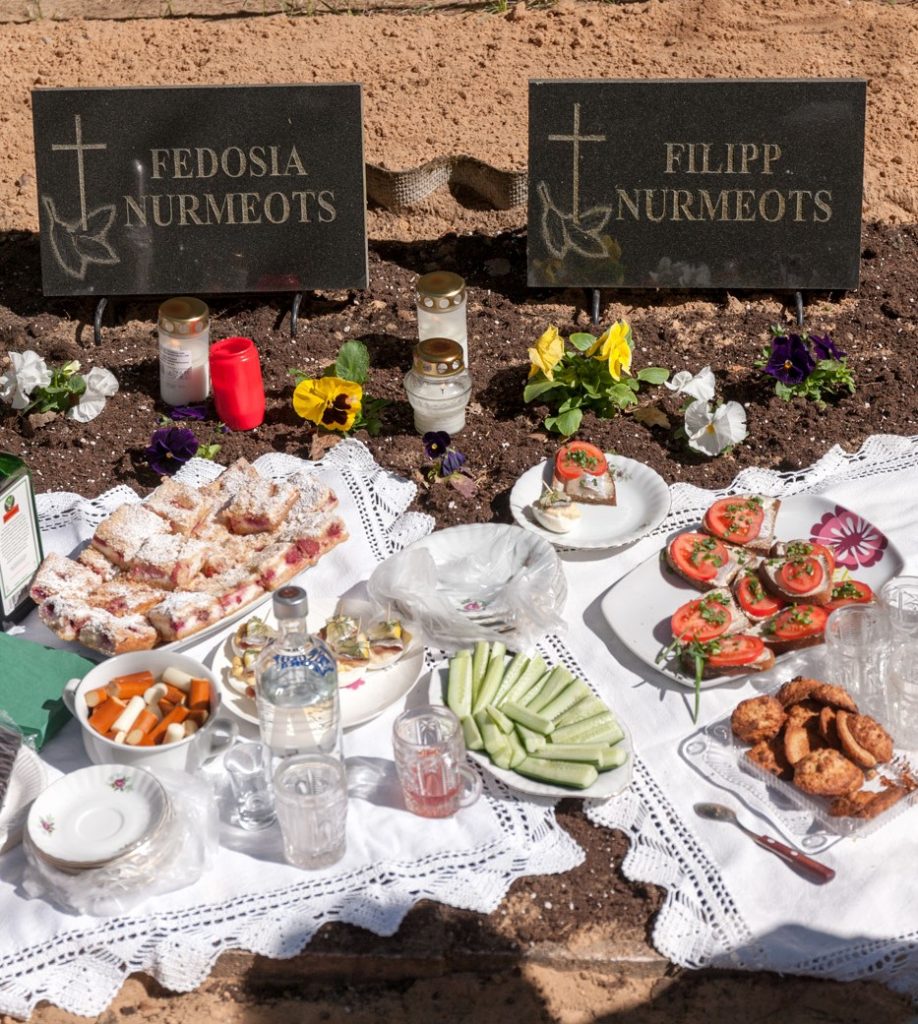
Last but not the least. Although a part of Estonia, the Setos have their own identity. With dwindling numbers of the Setos, how difficult is it to keep the Seto culture alive?
Very good and serious question!
The most vulnerable part of the Seto culture is the language. The loss of language is quick and seems almost inevitable, as there is no history of education being provided in Seto language. So, the younger generations already have a poor vocabulary and it is really hard to preserve the language. However, the Setos are not giving up!
During the past 25 years, quite a number of books have been published in the Seto language (which has no written history) and we have a monthly newspaper in the Seto language. But it sure is a huge challenge. With other elements of culture there seems to be more hope. Seto traditional clothes are valued, worn and made, the Seto cuisine is on the rise again, the Seto leelo is listed on the UNESCO List of Intangible Cultural Heritage from 2009. Many young people value Setomaa as a special living environment and try to contribute to the preservation of the traditional culture.
Things to know:
Visa: To visit the entire Setomaa region, you would need both an Estonian and a Russian visa. With an Estonian visa you can only explore the Estonian Setomaa. General required documents for the Estonia visa application can be found on the Schengen visa website.
Cover: Helen Külvik (photo: Toomas Tuul).

